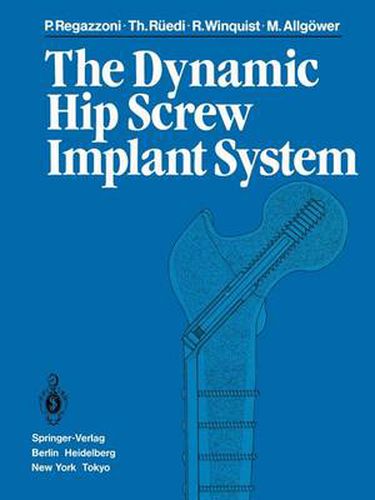Readings Newsletter
Become a Readings Member to make your shopping experience even easier.
Sign in or sign up for free!
You’re not far away from qualifying for FREE standard shipping within Australia
You’ve qualified for FREE standard shipping within Australia
The cart is loading…






This title is printed to order. This book may have been self-published. If so, we cannot guarantee the quality of the content. In the main most books will have gone through the editing process however some may not. We therefore suggest that you be aware of this before ordering this book. If in doubt check either the author or publisher’s details as we are unable to accept any returns unless they are faulty. Please contact us if you have any questions.
The AOjASIF* dynamic hip screw (DRS) has been designed primarily to stabilize trochanteric fractures of the hip. Selected fractures of the femoral neck and some subtrochanteric fractures are further indications for the DRS [40, 46]. The dynam ic condylar screw (DCS) has been developed for fractures of the distal femur and is now being tested clinically. The DRS and DCS are carefully coordinated with the preexisting ASIF standard sets of equipment for internal fixation of fractures. The concept of a sliding screw for trochanteric fractures is not new. The first author describing such an implant was Schumpelick [44]; he gives credit to Pohl [22], who was primarily a manufacturer working for Gerhardt Kiinscher. Re described the possibility of impaction at the fracture site with a sliding device. In the United States Clawson [7, 8] introduced the hip screw and found it to be extremely beneficial in trochanteric fractures. At approximately the same time, Massie [31, 32] and Pugh [39] designed the sliding-type flange nails, which offer similar intramedullary splinting with the possibility of fracture impaction. The following chapters describe the concept and design features of the DRS, as well as the details of the surgical technique. The application of the DRS for different types of fractures is illustrated with clinical examples. The results of 268 cases of trochanteric fractures treated with the DRS are presented and compared with results using the angled blade plate and Ender’s nails. Finally, some laboratory tests are described.
$9.00 standard shipping within Australia
FREE standard shipping within Australia for orders over $100.00
Express & International shipping calculated at checkout
This title is printed to order. This book may have been self-published. If so, we cannot guarantee the quality of the content. In the main most books will have gone through the editing process however some may not. We therefore suggest that you be aware of this before ordering this book. If in doubt check either the author or publisher’s details as we are unable to accept any returns unless they are faulty. Please contact us if you have any questions.
The AOjASIF* dynamic hip screw (DRS) has been designed primarily to stabilize trochanteric fractures of the hip. Selected fractures of the femoral neck and some subtrochanteric fractures are further indications for the DRS [40, 46]. The dynam ic condylar screw (DCS) has been developed for fractures of the distal femur and is now being tested clinically. The DRS and DCS are carefully coordinated with the preexisting ASIF standard sets of equipment for internal fixation of fractures. The concept of a sliding screw for trochanteric fractures is not new. The first author describing such an implant was Schumpelick [44]; he gives credit to Pohl [22], who was primarily a manufacturer working for Gerhardt Kiinscher. Re described the possibility of impaction at the fracture site with a sliding device. In the United States Clawson [7, 8] introduced the hip screw and found it to be extremely beneficial in trochanteric fractures. At approximately the same time, Massie [31, 32] and Pugh [39] designed the sliding-type flange nails, which offer similar intramedullary splinting with the possibility of fracture impaction. The following chapters describe the concept and design features of the DRS, as well as the details of the surgical technique. The application of the DRS for different types of fractures is illustrated with clinical examples. The results of 268 cases of trochanteric fractures treated with the DRS are presented and compared with results using the angled blade plate and Ender’s nails. Finally, some laboratory tests are described.